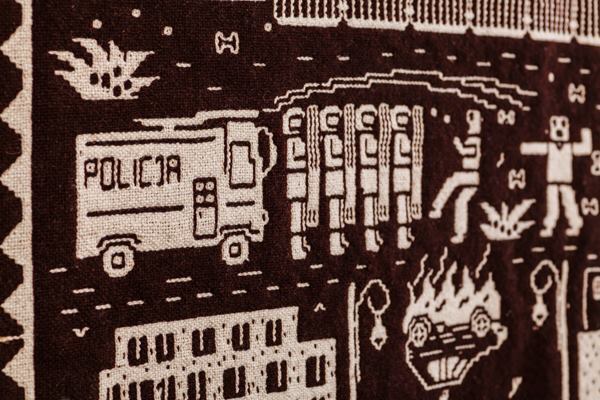
Collaboration was key at WantedDesign 2014, which took place this year from May 16 to May 19 in New York as a satellite event of the International Contemporary Furniture Fair. In its fourth iteration, this year’s WantedDesign showcased the work of 75 designers, emerging and established, for an audience of more than 10,000 visitors. A number of those designers, particularly new talent, teamed up to share resources and creative inspiration. We're profiling the work of three of those collectives. Read on to meet "Nasz," an exhibition of Polish design, and then check out the collaborations from designers in Chicago and Seattle.
Poland made its first appearance at WantedDesign this year, with “Nasz,” an exhibition of designs curated by Tomek and Gosia Rygalik of Styudio Rygalik and sponsored by Culture.pl, a Web-based resource for Polish culture that is hosted by the national Adam Mickiewicz Institute. Tomek and Rygalik brought together products that had a coherent, quiet presence, displaying the resourcefulness and timelessness of the country’s designers. Though the collection of seating, storage, lighting, tables, and tabletop products was modest, it wasn’t without whimsy—four white chairs hung askew from the ceiling while a moveable wooden dinosaur dangled its tail off of a round, white table.

Double-Thread Tapestry, Jakub Jezierski
So accustomed are we to wall tapestries depicting pastoral settings that Jakub Jezierski’s 110-cm-by-213-cm Double-Thread Tapestry will catch you off guard. No need to squint to see what he calls “a metropolitan apocalypse”: dragons breathing fire on buildings, cars burning, soldiers marching, and police spraying citizens. The artist who co-founded the Association of Polish Graphic Designers worked with folklore artist Malgorzata Peplowska to create the ominous design. “In the center of the composition is the Temple of Divine Providence: the biggest modern church that arouses various emotions in people,” Jezierski says. “Who is behind it? Who are they? Which side are they on?” Only the end of time will tell.

H2 Tables, Piotr Kuchcinski for Balma
For “Nasz,” Polish furniture manufacturer Balma reissued its H2 Tables with new oak elements instead of steel. Created as conference-room piece, its base is inspired by the art of paper folding and appears to have been cut entirely out of sheet metal and bent in the corners at its square base. “The entire construction lost its initial character after changing the material,” the company writes in a press release, “from a delicate and linear structure to a more architectural one resembling a timber roof truss.”

Gloria Dot, Marek Cecula
When it comes to fine china, gold designs are generally what signal to buyers and users that the pieces are classic, timeless, and of value. Ceramicist Marek Cecula wanted to create a new paradigm with his Gloria Dot pattern, which features black polka dots in place of any gold decoration on the Poland Porcelain Factory Chodziez’s china. “Gloria Dot is an attempt to re-position classical material from the past into contemporary language with minimum intervention,” he says. Though Cecula was born in Poland and now lives in London, he’s made stops all over the globe—including establishing Modus Design Studio in New York, being the visiting professor at the National Academy of the Arts in Bergen, Norway, and now teaching as a visiting professor at the Royal College of Art, London.

King Lizard, Antoni Bielawski
The King Lizard is a wooden toy for “people aged 7 to 105,” says its designer, Antoni Bielawski. Inspired by Polish wooden folk toys, the lizard’s movable wood oak parts are connected by rubber. “The toy is nice to the touch and its mobility makes it so attractive you will want to hold it in your hands and animate it,” he explains. Bielawski is a student at the Faculty of Industrial Design at the Academy of Fine Arts in Warsaw.
This article has been updated with a correct image for Balma's H2 table.
















